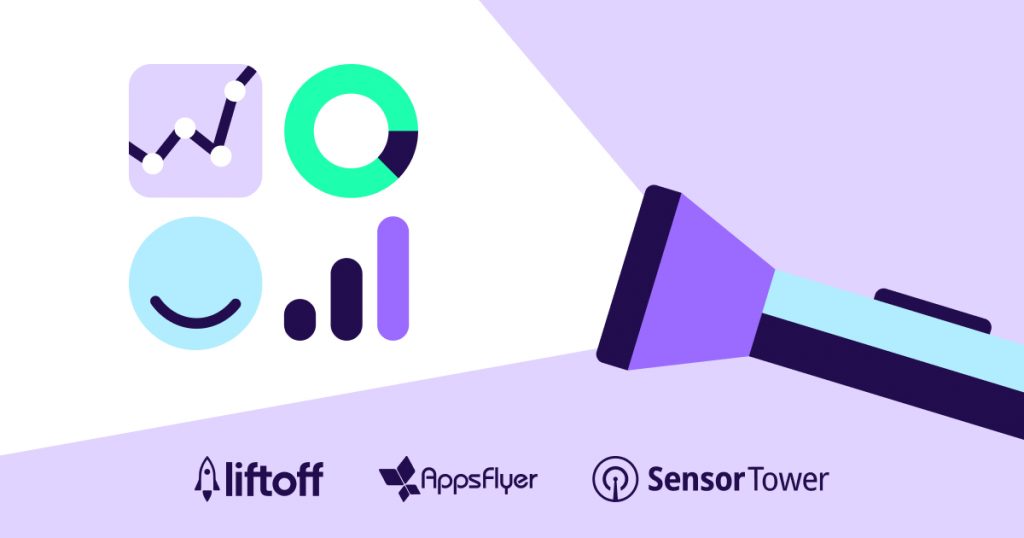
Introduction
Mobile technology has come a long way. On your phone, you can run your business, while catching your favorite Pokemon, and simultaneously scrolling through millions of hilarious cat videos.
This is why mobile marketers rub their hands at one of the greatest opportunities in recent times. In fact, mobile advertising spend has surpassed $327.1 billion worldwide, and is projected to surpass 339 billion by 2023.
As a result of this unprecedented growth, the world of mobile advertising presents new and complex challenges.
How do you effectively measure the impact of your advertising across multiple touchpoints? How do you solve the need for immediacy? How do you work around the ongoing privacy changes?
With this guide, we’ll tackle these tough questions and walk you through the ins and outs of mobile advertising, dispel some of the biggest misconceptions, and equip you with the tools to succeed.

Chapter 1
What is mobile advertising?
Let’s start with the basics. Mobile advertising is a marketing method displayed on smartphones and tablets through paid channels. Whether it’s banner ads in mobile games or SMS ads, mobile advertising is one of the most effective methods to advertise in today’s digital age.
Mobile marketing vs. mobile advertising
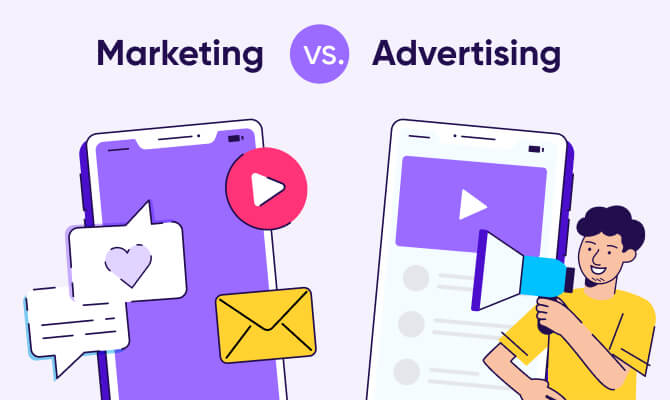
Marketing and advertising are oftentimes used interchangeably, but wrongly so (even outside the world of mobile).
Mobile advertising is a paid methodology utilizing channels like in-app ads, banner ads, text ads, and rich media mobile ads. On the other hand, mobile marketing encompasses the broad practice of marketing on mobile devices, which includes mobile advertising.
Traditionally, mobile advertising includes banner ads, interstitial ads, video ads, rewarded ads, playable ads and more (which we’ll cover in more detail in chapter 3).
As to the most prominent mobile advertising platforms, these would include Google Ads, Meta ads, Apple Search, AdMob, Tube Mogul, and Airpush.
Broadly speaking, Mobile marketing can come in many forms — including non-paid methods such as content marketing, interactive augmented reality (AR) campaigns, and check-in coupons.
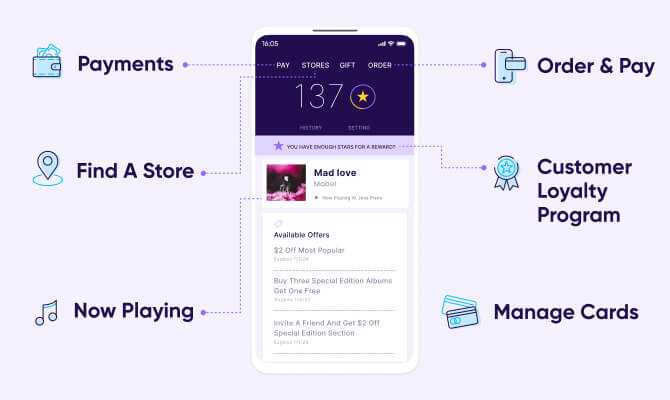
Starbucks’ mobile marketing strategy is a combination of many effective tactics including geo-based engagement, digital payments, robust loyalty program, and an effective notification system.
These tactics allow Starbucks to cash in $1.6 billion of preloaded money simply from their rewards program.
For example, Japanese fashion brand UNIQLO allowed mobile users to check in to any of their stores to receive an exclusive coupon using geo-based segmentation, social media, and in-app engagement.
Another example of mobile marketing is Lucasfilm’s promotion of “The Mandalorian” through an AR app, which allowed fans to interact with Mandlorian heroes from the comfort of their own homes.
The mobile ad ecosystem: a brief overview
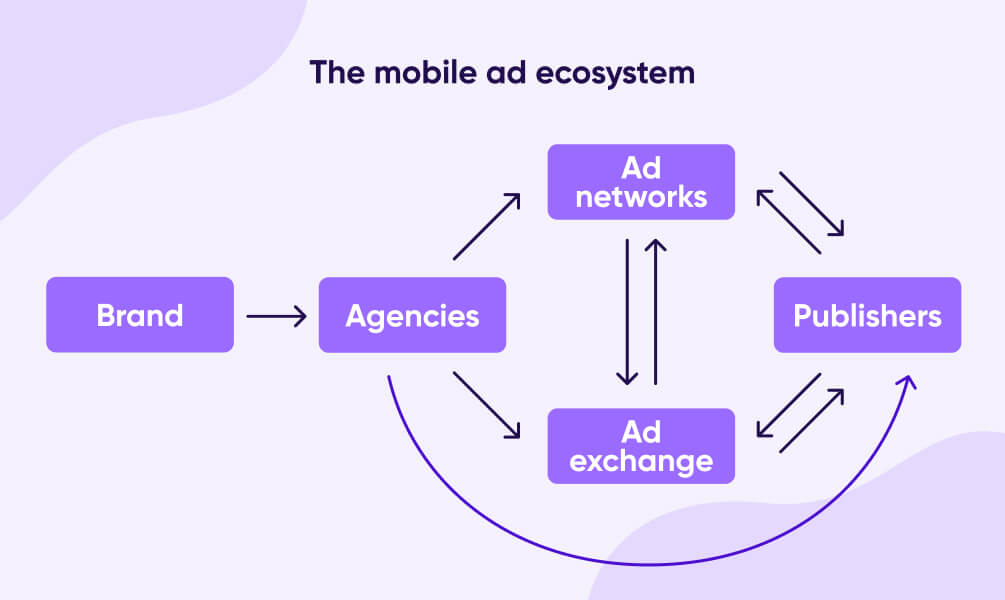
To say there are many moving parts in the world of mobile advertising would be an understatement. Here’s a brief overview of how it works:
Basic terminology
- Brands – meaning the companies that advertise their products or services.
- Agencies – the liaison between brands and ad networks (and sometimes ad exchanges).
- Publishers – the platforms where ads are shown to relevant audiences.
- Mobile ad networks – aggregate advertising inventory and pair them with appropriate advertisers.
- Mobile ad exchanges – automate the buying and selling of ads programmatically.

Benefits and challenges of mobile advertising
Now that you’re familiar with the basic terms, let’s talk about the opportunities and challenges in the world of mobile advertising. With increasing privacy changes, comes increasing challenges to solve. Here’s what to expect.
The upside
1 – Advertisers reach more users via mobile phones. Research shows that more than half the global population owns mobile phones, which has gained mass adoption in both developed and developing countries. As of 2021, 72.7% of Americans own a smartphone.
2 – Hyper-targeted advertising. Mobile advertising utilizes profitable data points about your target audience, providing your iOS14+ users have consented to their data collection. This includes demographics, device, mobile connection, operating system, preferences, hobbies, location, habits, and spending behavior.
3 – Placement and timing. Since smartphone users carry their phones with them at all times, advertisers can leverage geolocation and send timely offers to consenting users at the most ideal time of day.
For example, providing you’re an Android or a consenting iOS14+ user, you might get a Starbucks promotion when you’re a block away from the store. Alternatively, you might be encouraged to visit a certain gas station while using a GPS navigation app.
4 – Cost effectiveness. Despite the recent challenges around access to user-level data, mobile advertising still boasts higher conversion rates and more granular segmentation than traditional channels, which proves to be much more cost effective for advertisers at scale.
The downside
Increasing privacy measures. As Apple rolled out the ATT framework and Google moves towards a cookie-less browser experience, more and more privacy measures are being put in place.
Marketers and publishers are finding alternative solutions including utilizing SKAdNetwork, Data Clean Rooms, predictive modeling, and leveraging cohort analysis. More on this later.
Fraud. Mobile ad fraud has been a challenge for marketers since the practice began. Whether it’s bots, fake installs, device farms, or install hijacking, bad actors will be where the money is.
And as mobile advertising spend continues to scale massively, there will be an increasing need for more accurate measurement and fraud detection.

Mobile ad types and formats
Mobile ads can come in many shapes and sizes, depending on their purpose, context, audience, and category. Here are the most common mobile ad types and formats:
1 – Banner ad unit. Time-based rectangular ads that appear at the top or bottom of the screen. They can include text, image rich media, or videos. Banner ads are the most common and easy to implement.
2 – Native ads. Ads that replicate the look and feel of your app or website while appearing ‘native’ to the user. These ads are especially effective on long-form written content and can be created in the form of image or video ads.
3 – Rewarded ads. Ads that incentivizes users to engage by rewarding them with in-game benefits after they play a game, complete a survey, or watch videos.
4 – Video ads. Ads with video and audio, which may come in multiple formats including bumpers, skippable in-stream, non-skippable in-stream, outstream, in-feed video, and masthead ads.
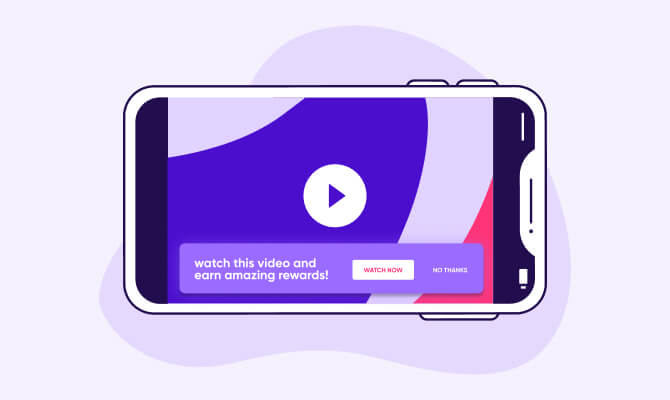
5 – Audio ads. Audio-only ads that are utilized on music and voice applications including Spotify and Amazon Echo.
6 – Playable ads. Provide a playable, shortened version of a game designed to give users a taste of the full in-game experience. Playables are highly interactive and drive the highest CPMs for gaming apps.
7 – Interstitial ads. Ads that show between breaks and transitions and take up the entire screen, typically between levels in games.
8 – Text ads. Text-only ads that are utilized on search platforms like Google and Bing.
What are the most effective ad types?
In-app ads are more effective when they’re engaging, interactive, and don’t distract from the user experience.
For gaming apps that involve levels, for example, interstitial ads are extremely popular, while hardcore gaming apps utilize rewarded apps to incentivize engagement.
In terms of banner ad units, the most effective ad sizes according to Google are 300×250, 336×280, 728×90, 300×600, and 320×100.

Mobile advertising measurement: metrics you should know
Marketers love acronyms and mobile marketers are no exception. You may be thinking WTF is ARPU, CTI, PCR, CPI? Don’t worry, we got you covered.
Mobile app marketing is ultimately driven by data, and the most effective way to measure performance is highlighting what metrics are key indicators of success.
No single metric can fully paint the impact of your advertising spend, which is why we’ll be listing all the important metrics for you to better understand how you can effectively measure engagement, retention, conversion, performance, and more.
Our recommendation is to avoid overcomplicating things by measuring KPIs that may not apply to your business. Try a few to find which work best for your app and needs, and then optimize them as you go along.
1 – App install fraud rate. The share of identified and blocked fraudulent installs within a cohort of app installs. This is calculated by fraudulent installs / total # of NOIs (non-organic installs).
2 – Average Revenue Per User (ARPU). This includes in-app purchases, ad impressions, ad clicks, subscriptions, and paid downloads. ARPU is calculated by revenue during period of time / total # of users.
3 – Average Revenue per Paying User (ARPPU). Estimated revenue a single user generates during a specific period of time through subscriptions, in-app purchases, or downloads. ARPPU is calculated by total revenue / # of paying users.
4 – Average session per user. Average time users spend on your app per session, which helps determine high quality vs less engaged users. This is calculated by total # of sessions / total # of users.
5 – Return on Ad Spend (ROAS). Measures profitability of an ad campaign. ROAS is calculated by user generated revenue / total marketing spend.
6 – Click to Install (CTI). Share of users who clicked an ad and installed your app. CTI is calculated by number of installs / number of clicks
7 – Cost per Install (CPI). Measures the cost an advertiser pays a publisher for an app install. CPI is calculated by ad spend / total # of installs in ad campaigns.

8 – Cost per Action (CPA). The cost to get a user to perform a specific action, including signing up for an account, making an in-app purchase, or setting up notifications. CPA is calculated by cost / total # of actions being measured.
9 – Effective Cost per Mille (eCPM). Revenue generated per 1,000 impressions, which is used by publishers to optimize ad placements, monitor monetization campaigns, and measure overall ad monetization performance. eCPM is calculated by (total ad revenue / total impressions) * 1,000.
10 – Lifetime Value (LTV). Amount of revenue generated per user from app install to a designated date. LTV is calculated by total revenue generated since install date / total # of users who installed on that date.
11 – Paid Conversion Rate (PCR). The volume of conversions from paid advertising, including PPC, display ads, social media ads, and sponsored reviews. PCR is calculated by total # of conversions / total of ad interactions attributed to conversion.
12 – Pay Per Click (PPC). How much it costs per ad click. PPC is calculated by total advertising cost / number of clicks.
13 – Retention Rate (RR). Number of returning users in a certain time period. This is calculated by total # of active users during date range since install / total # users who launched your app for the first time during the same date range.
14 – Repeat Purchase Rate (RPR). Number of users who made several purchases during more than one session, which indicates a higher LTV. RPR is calculated by total # of purchases from existing users / total # of purchases.
15 – Return on Experience (ROX). Measures the financial impact of a campaign on the customer experience. ROX is calculated by benefits (e.g. revenue) / cost of experience (software, services, manpower) x 100%.
16 – Share of Remarketing Conversions / Average Remarketing Share. Percentage of remarketing conversions compared to all marketing conversions. Remarketing is key to improve retention and user LTV, and is proven to be much cheaper than new user acquisition. This is calculated by total # of remarketing conversions / total # of marketing conversions.

Chapter 5
Six steps to ensure a bulletproof mobile advertising strategy
Let’s talk about the best ways you can set yourself up for success when devising a mobile advertising strategy.
1 – Establish your goals early
The first step is to clearly define your success metrics. Set clear, simple, and measurable goals to better understand what campaigns you’re running and why.
Some objective may include:
- Drive brand awareness for X demographic
- Increase in-app-purchases by X%
- Increase repeat purchase rate by X%
- Reduce churn by X%
- Improve retention by X%
2 – Clearly define your audience
Not every marketer should pay gazillion dollars just to be on a billboard on Times Square. Mobile advertising excels at reaching your target market with the highest levels of personalization.
Go back to your buyer personas and identify which group of potential users are the most profitable. With this, you can more accurately find a relevant ad network, appropriately tailor your creatives, and understand what ad types you can utilize.
3 – Master your ATT prompts
With over 75% of apps now utilizing the ATT prompt, the question is: how many are doing it the right way?
We’ve seen that the highest number of opt-in rates occur when ATT prompts are shown upon first launch, but mastering the ATT prompt is unique to your brand and app category.
App marketers can learn to optimize pre-prompts from brands like Nike and Hello Fresh to increase opt-in rates.
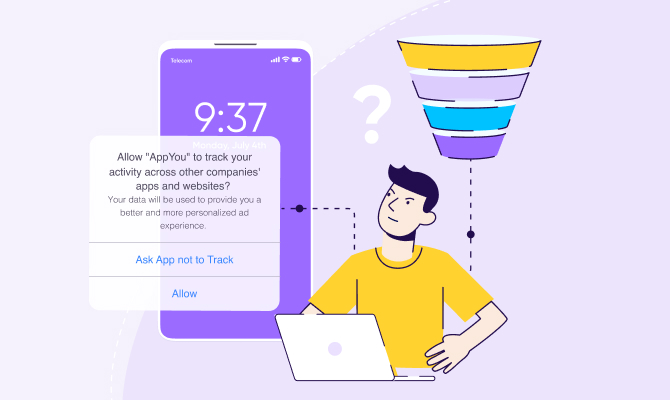
4 – Focus on in-app performance
Poor app performance can be extremely costly. 70% of mobile app users will abandon an app that takes too long to load, and a 1-second delay can cause a 7% drop in conversions.
In addition to uninstalling your app, frustrated users will actively look for a competitor.
Combat this by improving response time and screen rendering, preventing crashes, and optimizing energy consumption.
You can read our app performance guide here for more tips on how to ensure optimal in-app performance.
5 – Have a firm grasp of your numbers
Advertising is a long-term investment. The key to be successful is understanding your costs, revenues, and ultimately your returns. Yes, measuring ROAS in a fragmented and privacy-centric world is challenging.
But, there are many approaches to better measure your campaigns. Whether it’s manually, programmatically, through aggregation software, or an MMP, explore a measurement solution that works best for your size and budget.
6 – Adhere to privacy guidelines
Consumer privacy regulations have undergone monumental changes in recent years. It’s crucial to stay on top of the guidelines and make sure your app meets them to avoid any harsh penalties that may jeopardize your paid campaigns.
To read more about measurement and mobile attribution in the age of user privacy – start here.

What’s next for mobile advertising?
We have entered the fastest rate of technological growth — ever — and the numbers are staggering. With 63% of the world’s population using the internet, and 5.32 billion+ unique mobile phone users, we are entering an unprecedented era of mobile growth.
Here’s what that means for the future of mobile advertising.
Changing attitudes towards privacy
We can’t talk about the future without addressing user privacy. Apple has led the privacy conversation for years now, which began when they introduced the Intelligent Tracking Prevention (ITP) feature on Safari.
Now with Apple’s App Tracking Transparency (ATT) framework rolled out with fully-fledged ad campaigns, mobile users have begun to understand the more profound implications of data privacy.
This calls for a much-needed mindshift from the days when user-level data was completely up for grabs to a new reality — where several methodologies need to be put in place for advertisers to be able to maintain data granularity and draw actionable insights.
On the topic of the complexities of ROAS measurement in the era of privacy, here are three hands-on approaches to consider.
Gold rush for user-level data
Apple’s ATT framework has posed a new challenge for advertisers, publishers, and app developers, making it more difficult to engage specific audiences and optimize their campaigns.
Since app users now have to opt-in to be tracked, user-level data is missing from a large cohort from the start.
Experts are foreseeing a massive gold rush to gather 1st party data through owned media, which is only expected to pick up speed.
Whether it’s lead captures from signups, or converting newsletter subscribers, a growing pool of 1st party data is a gold mine for tailored advertising opportunities.
More mergers, more acquisitions
The rush for 1st party data has led to more mergers and acquisitions. Microsoft acquired Activision Blizzard for $68.7 billion, Take-Two interactive acquired Zynga for $12.7 billion, and these are only a few of the head-spinning, mega-sized M&A deals that swept the ecosystem for the past few years.
While these astronomical figures are breaking records, expect this trend to persist. Acquiring marquee content and valuable IPs are at the heart of these deals, because consolidations come with a wealth of fresh 1st party data, and the ability to run cross-platforms campaigns.
Data Clean Rooms and MMPs to meet privacy challenges head on
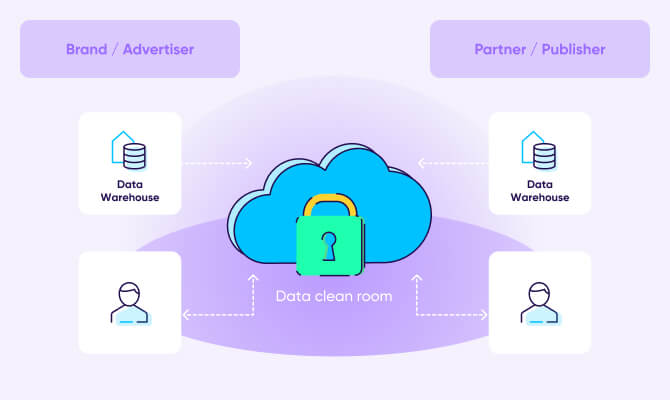
Increasing challenges for data measurement bring with them increasing solutions. Data Clean Rooms (DCRs) provide carefully supervised yet highly valuable access to user-level data in an aggregated form — while adhering to privacy regulations in full.
Essentially, DCRs act as an intermediary layer between advertisers, publishers, and partners — that share user behavior data anonymously without compromising PII (personally identifiable information).
There’s no doubt that the need for accurate measurement and attribution will continue to skyrocket as we move to a privacy-centric mobile landscape.
Trusted MMPs can help you measure and attribute mission-critical data from multiple sources, OSs, channels, and mediums — to help you measure, optimize and scale your business with confidence.

- Mobile advertising is marketing through paid advertising channels like in-app advertising, banner ads, text ads, and rich video ads. Mobile marketing encompasses the broad practice of marketing on mobile devices, including mobile advertising.
- Mobile advertising’s greatest strengths are the ability to engage specific audiences in a tailored and personalized manner, offer highly effective UA capabilities, and enable cost effective acquisition and retention.
- The downside to mobile advertising is increasing privacy measures, which makes measurement attribution more challenging. Mobile fraud is also prevalent, which is why advertisers must be proactive at protecting their ad spend.
- The most effective way to measure mobile advertising performance is understanding which metrics define success for your unique app. Ensure your data is accurate so that you can test effectively and execute accordingly.


